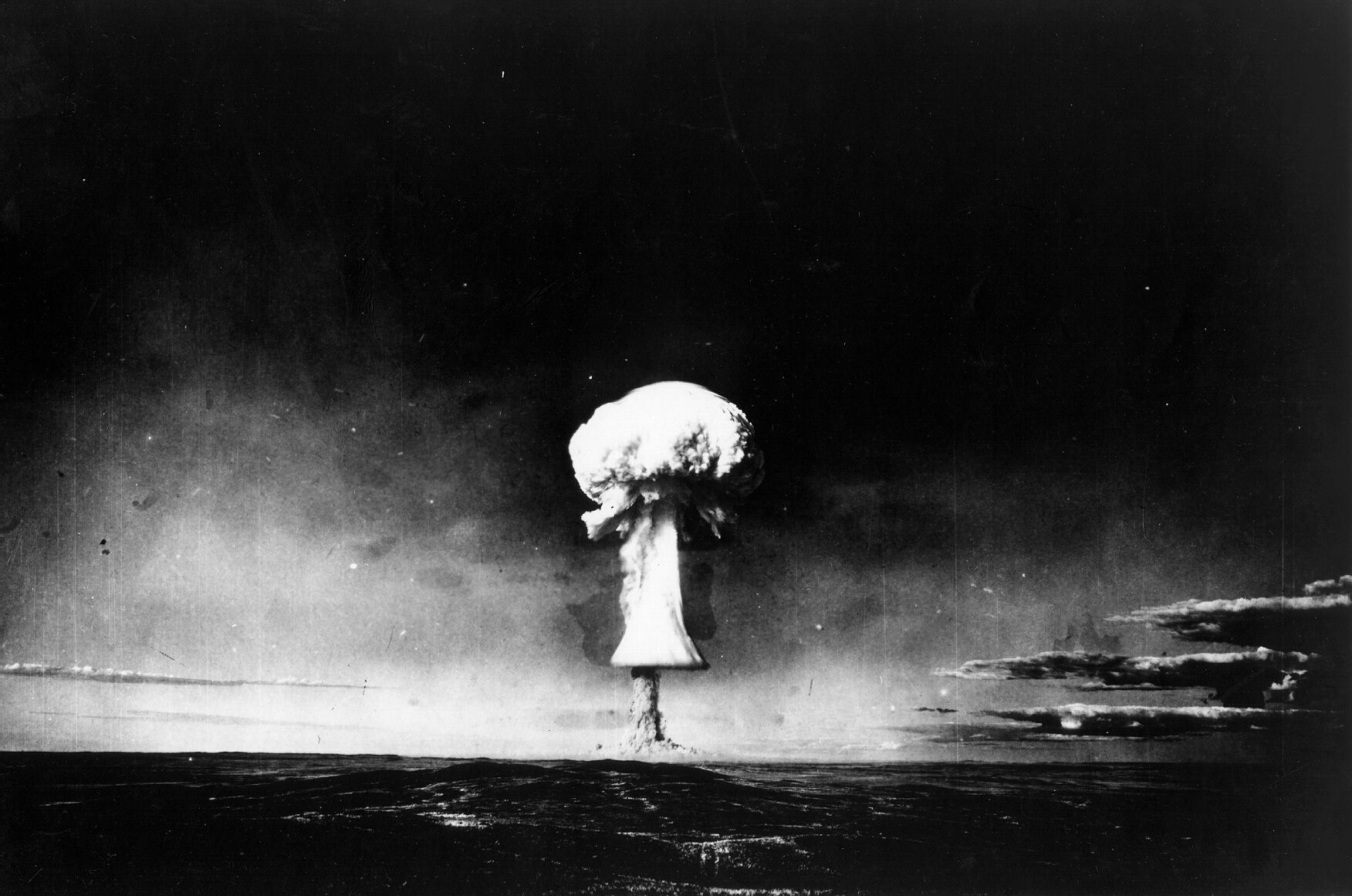ASTANA — Kazakhstan celebrates Republic Day on Oct. 25, commemorating its sovereignty and resilience. In over three decades, the country made remarkable strides in its economic development and political reforms. Importantly, the nation has also championed an anti-nuclear movement for the benefit of future generations. In a world where the pursuit of peace often seems like an elusive dream, the story of Kazakhstan stands as a beacon of hope.

A view of nuclear mushroom in Semipalatinsk. Photo credit: Online photo exhibition dedicated to the 30th anniversary of the closure of the Semipalatinsk nuclear test site gov.kz.
At the forefront of this journey is Olzhas Suleimenov, a renowned anti-nuclear activist whose efforts have propelled Kazakhstan to the forefront of the global anti-nuclear movement.
Kazakhstan, the world’s largest landlocked country, was the site of over 450 nuclear tests conducted by the Soviet Union from 1949 to 1989. These tests left a devastating mark on its land, people, and environment. The final nuclear test at the Semipalatinsk Test Site was conducted on December 1, 1989, a cessation largely attributed to Suleimenov’s unwavering advocacy.
Born on Feb. 18, 1936, in Almaty, Suleimenov is a prominent Kazakh poet and writer whose literary work has left an indelible mark on the cultural landscape of Kazakhstan.

Suleimenov gives a speech. Photo credit: documentary film “Nevada-Kazakhstan,” Sergey Shafir.
He is best known for his poignant and thought-provoking poetry and essays that explore his nation’s complex history and identity. His most celebrated work, “Az i Ia,” symbolizes the struggle for self-identity and preserving Kazakh heritage. Az i Ia, roughly translated as Myself and I, delves into the potential Turkic origin of the Russian medieval chronicle “The Tale of Igor’s Campaign.”
Suleimenov emerged as a prominent figure in Kazakhstan’s anti-nuclear movement during the 1980s.
His voice, at times a solitary cry, found resonance worldwide. As a founding member of the Nevada-Semipalatinsk movement, his work was imperative in compelling both the United States (U.S.) and the Soviet Union to reconsider their nuclear testing policies during the late 1980s. The Nevada-Semipalatinsk social movement was named this way in a show of solidarity with similar movements in the U.S., which were fighting to cease operations at the Nevada Test Site. The test ban treaties that followed were essential steps toward a world free of nuclear threats.

Participants in the Nevada-Semipalatinsk movement. Photo credit: Online photo exhibition dedicated to the 30th anniversary of the closure of the Semipalatinsk nuclear test site gov.kz.
When Kazakhstan gained independence from the Soviet Union, it inherited the fourth largest nuclear arsenal in the world. However, under the leadership of President Nursultan Nazarbayev and with Suleimenov’s advocacy, Kazakhstan voluntarily renounced its nuclear weapons and signed the Treaty on the Non-Proliferation of Nuclear Weapons.
Kazakhstan’s commitment to peace and nuclear disarmament earned Olzhas Suleimenov a prominent role on the global stage.
In September 1996, the United Nations General Assembly adopted the Comprehensive Nuclear-Test-Ban Treaty (CTBT). In recognition of its commitment to peace and anti-nuclear weapons advocacy, Kazakhstan was entrusted with the presidency of the CTBT’s Preparatory Commission from 2013 to 2015.
As Kazakhstan prepares to celebrate Republic Day on Oct. 25, the nation reflects on the remarkable journey it has taken together with figures such as Olzhas Suleimenov. The day is a time to honor the country’s sovereignty, culture, and commitment to fostering international peace and cooperation.
Suleimenov’s vision and tireless activism have not only led to a Kazakhstan free from nuclear weapons but have also contributed to global efforts to reduce their threat. His legacy reminds us that the quest for peace is a shared obligation that cuts across borders and ideologies.

